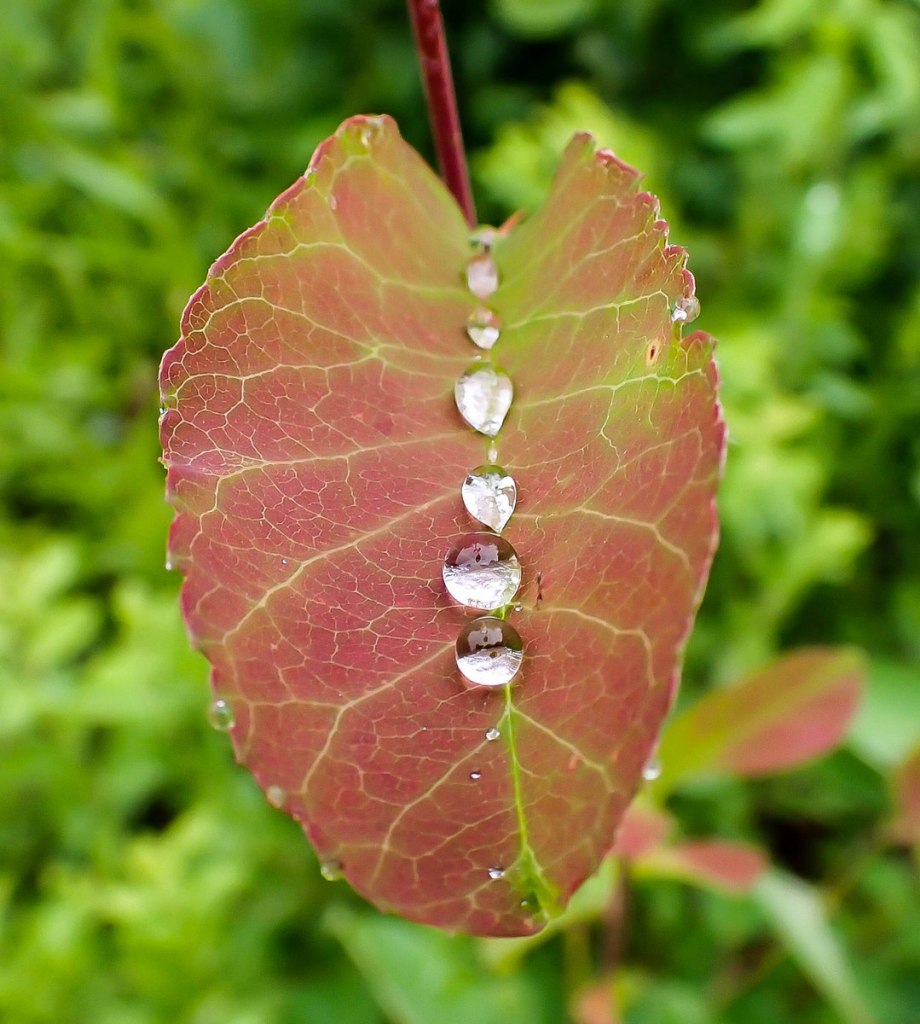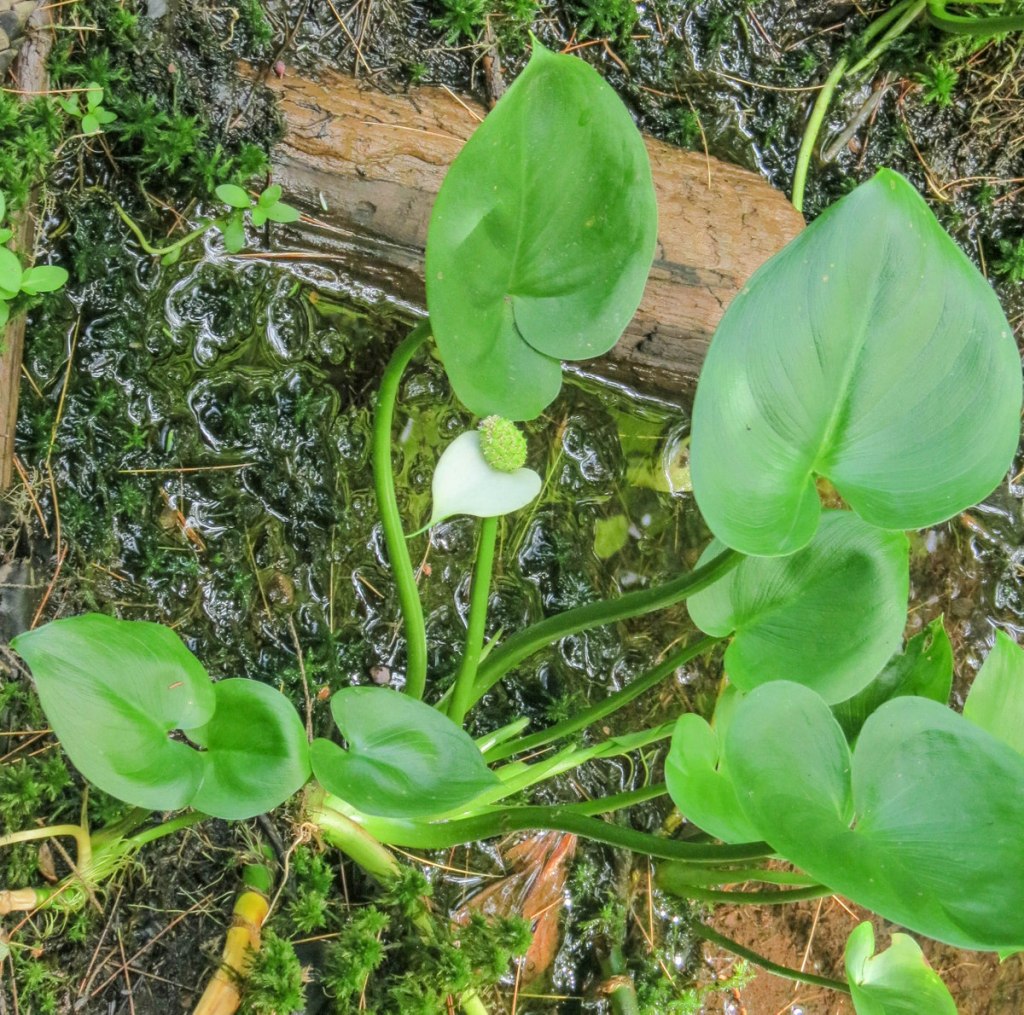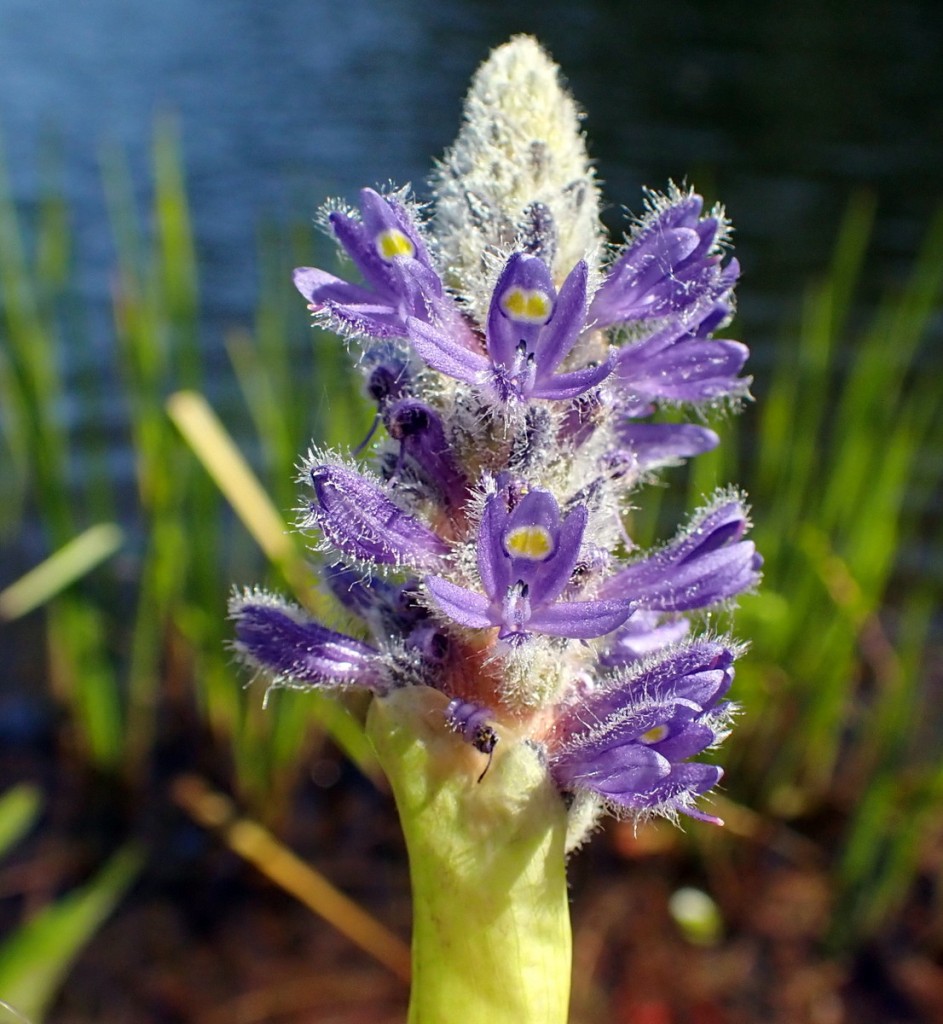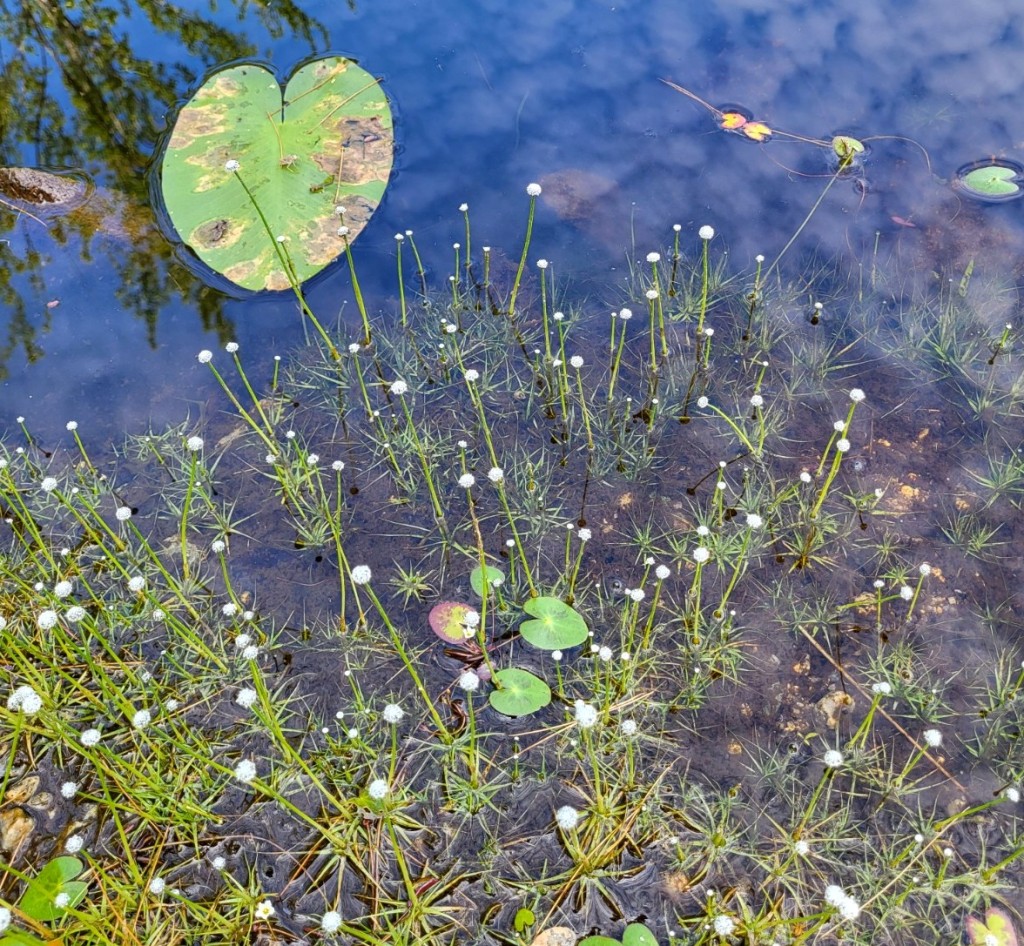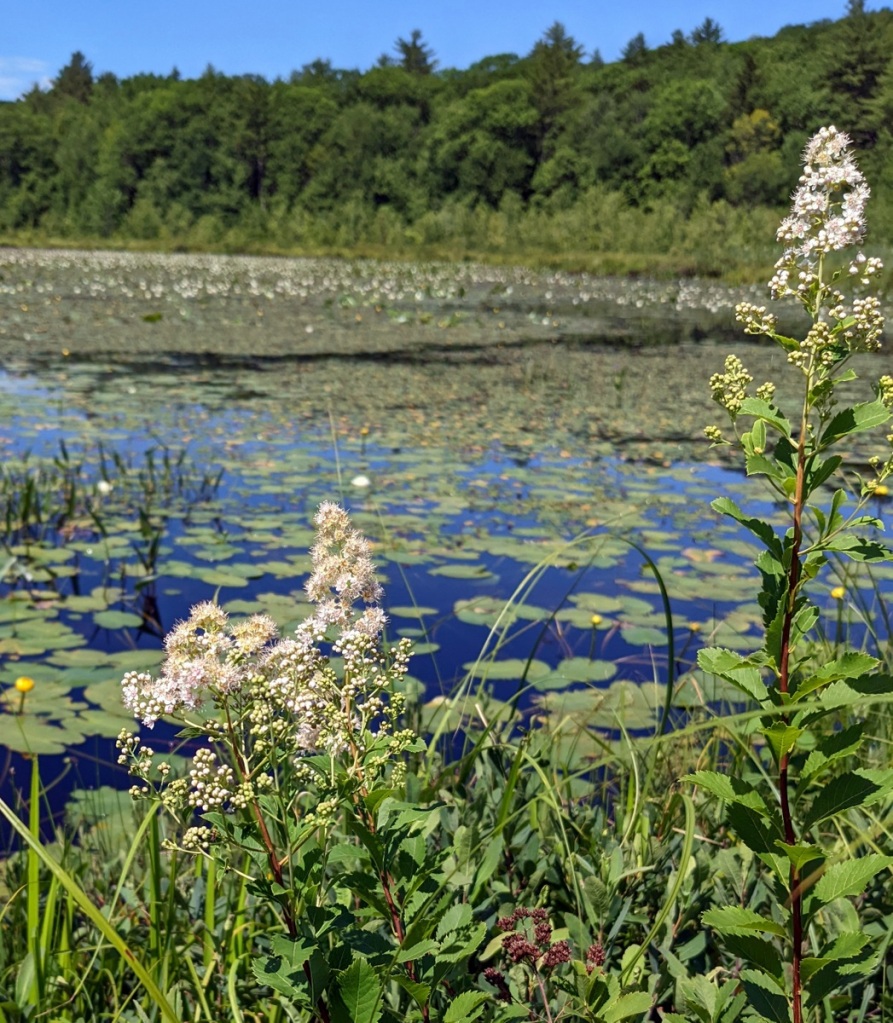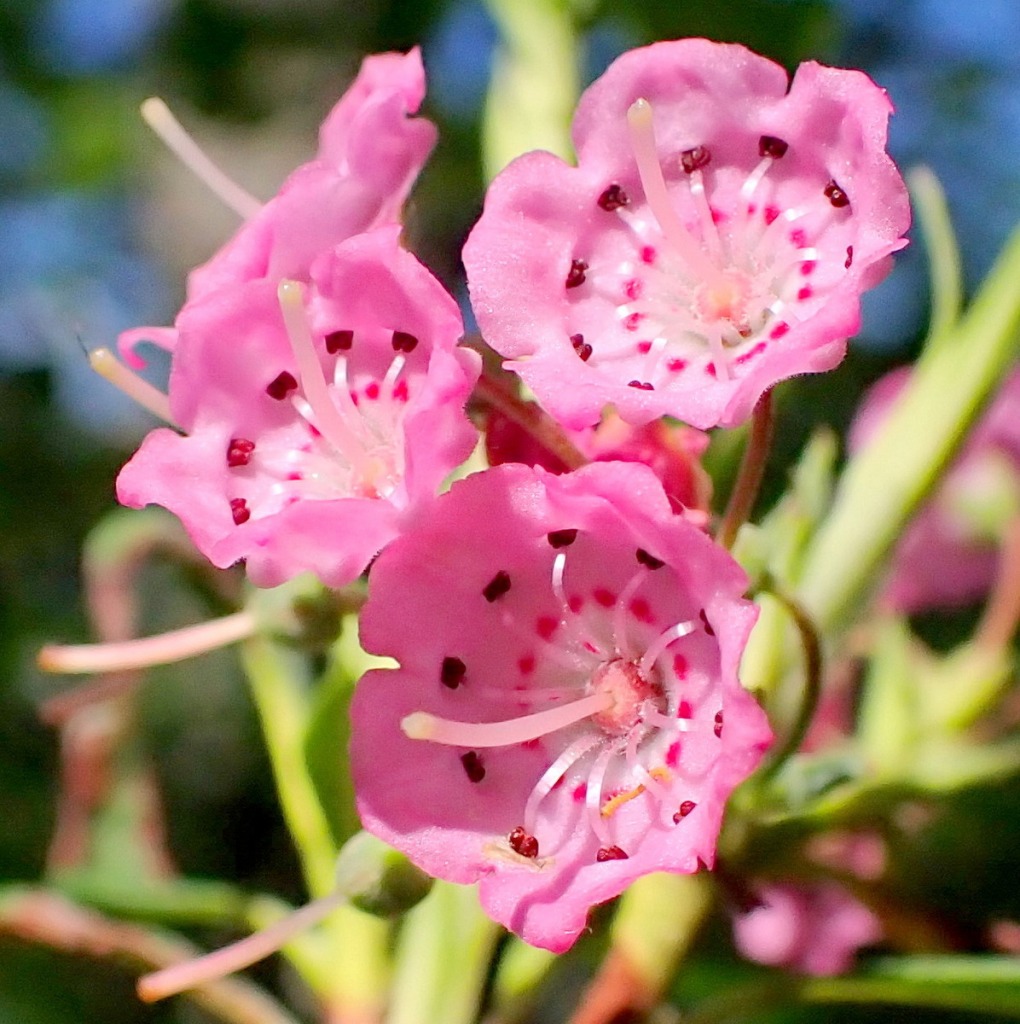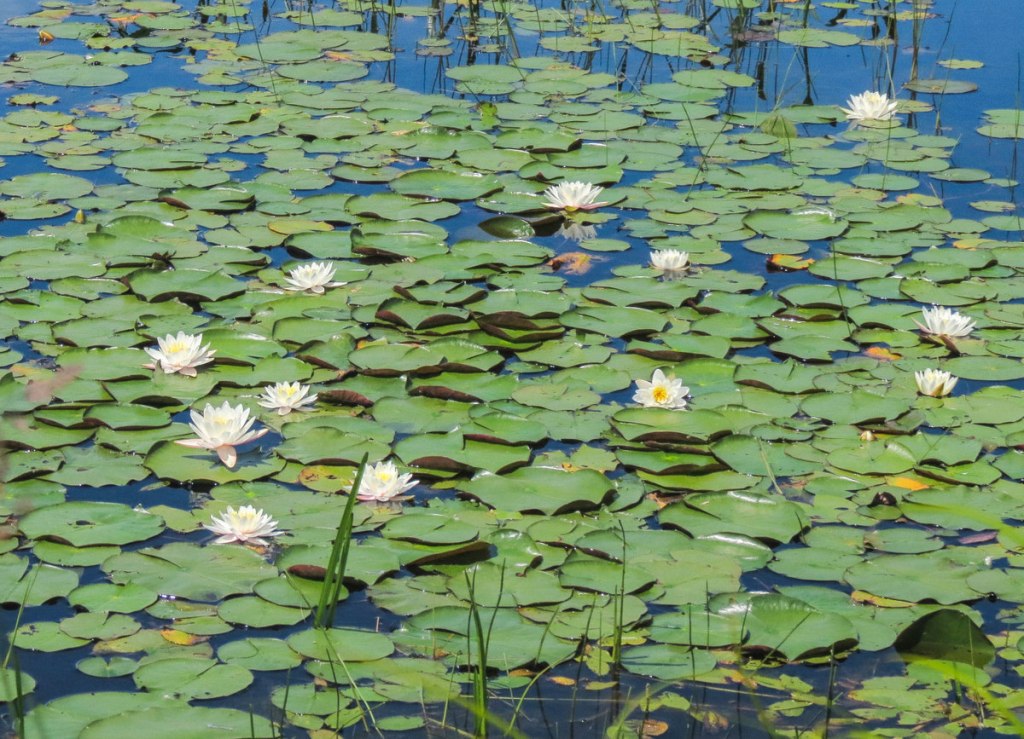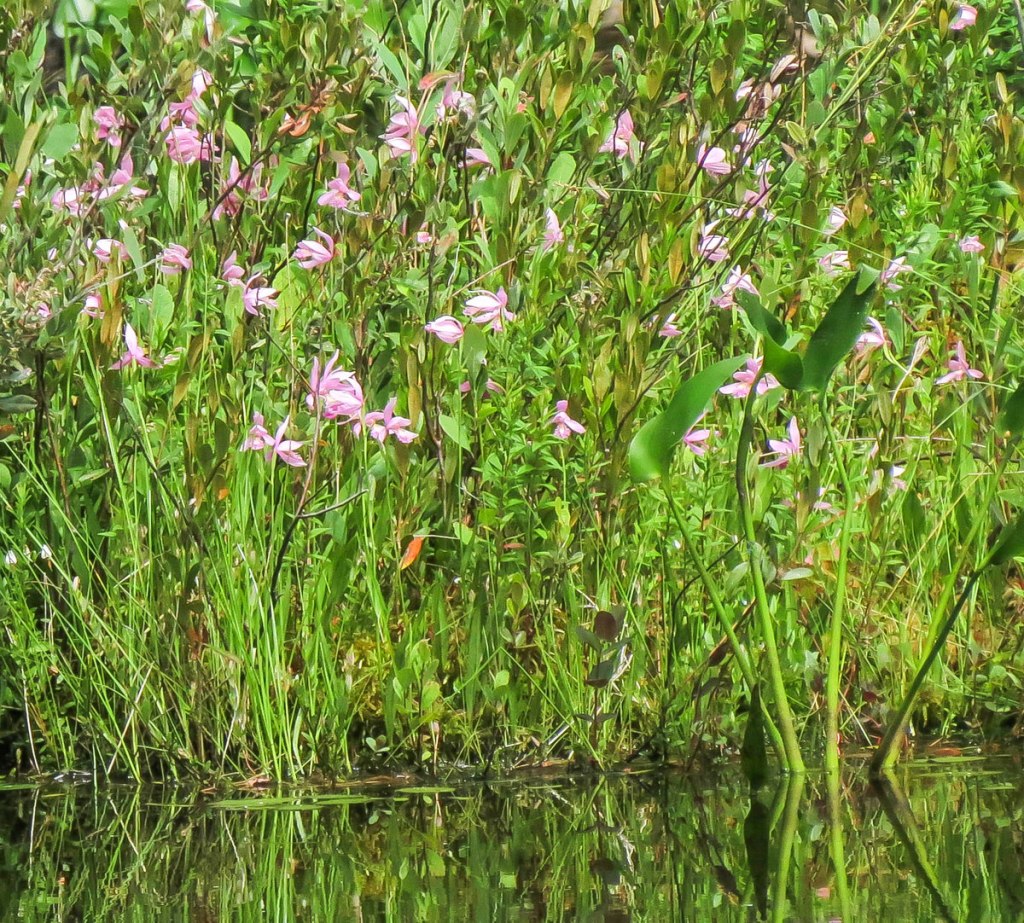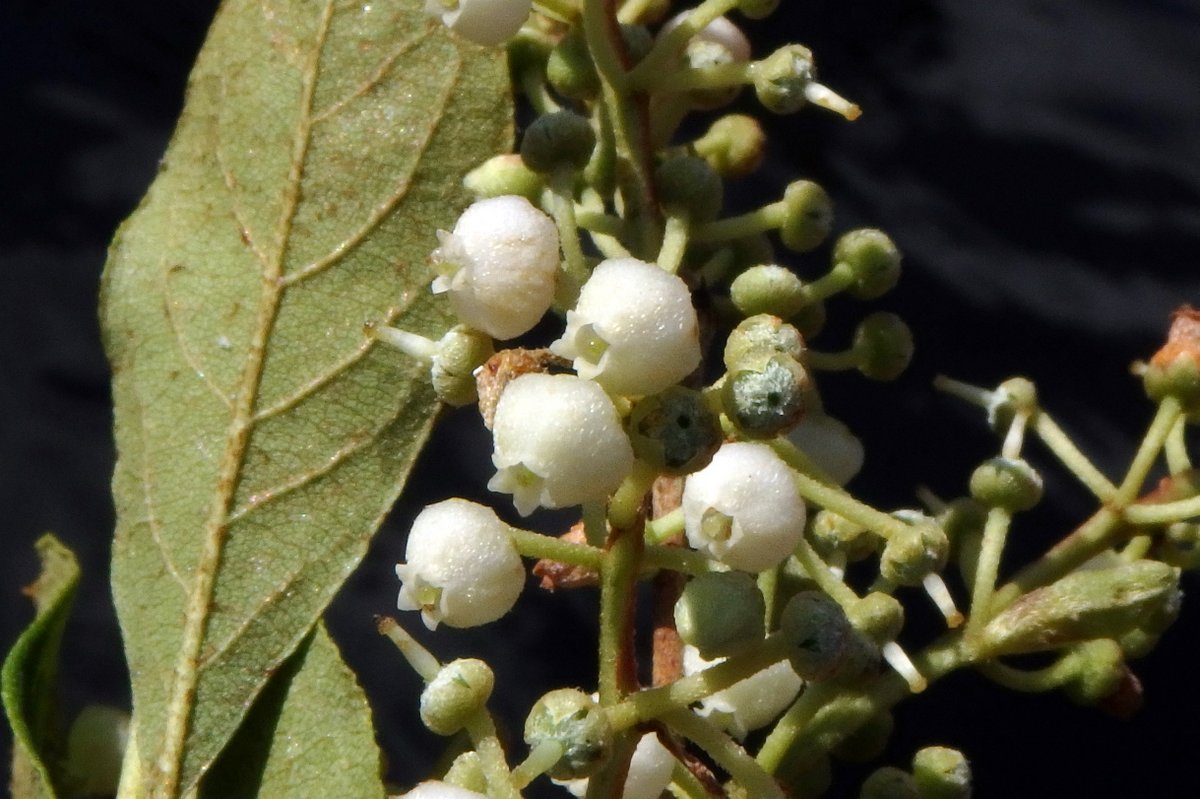
You might think I’m trying to flood you out with so many watery posts lately but the truth is where there is water there is life, and even when I don’t show it in a post I’m never far from it. This place, a pond in Marlborough New Hampshire, is special because it is about as close as you can get to true wilderness. It’s a place you come to listen rather that speak; a place you come to when you want to be taught by nature. It is also special because of the many unusual plants that grow here. None of them are truly rare but some are hard to find and / or get close to. That means that the things you’re about to see in this post aren’t the kinds of things you’ll find just kicking around on the side of the road.

One of the plants that is often hard to find, and especially hard to get close to, is wild calla or water arum because as its name suggests it is a true aquatic and grows in water. Here though, there are large areas of sphagnum peat moss that grow out into the pond from shore, so if you’re careful you can get close to the plants without getting too wet.

I’ve found this plant in just three places, and this is the only time I’ve been able to get this close to it. It is an arum like skunk cabbage or Jack in the pulpit but unlike those plants water arum has a spadix that is easily seen. The spadix is the club shaped part that carries the tiny white flowers seen here. Arums have a spathe as well as a spadix and in this case the spathe is the white leaf like part. The flowers will be followed by green berries that will eventually turn bright red. An odd fact about this plant is how its flowers are pollinated by water snails passing over the spadix. It is thought that small flies and midges also help with pollination, because the odor from the tiny blossoms is said to be something that a fly might like.

There was a time I would have walked across this fallen tree without hesitation but these days I know I’d better just stay on the trail so I skipped it and went around. You can see all the wild callas growing down there. They were why I wanted to find a quick way down.
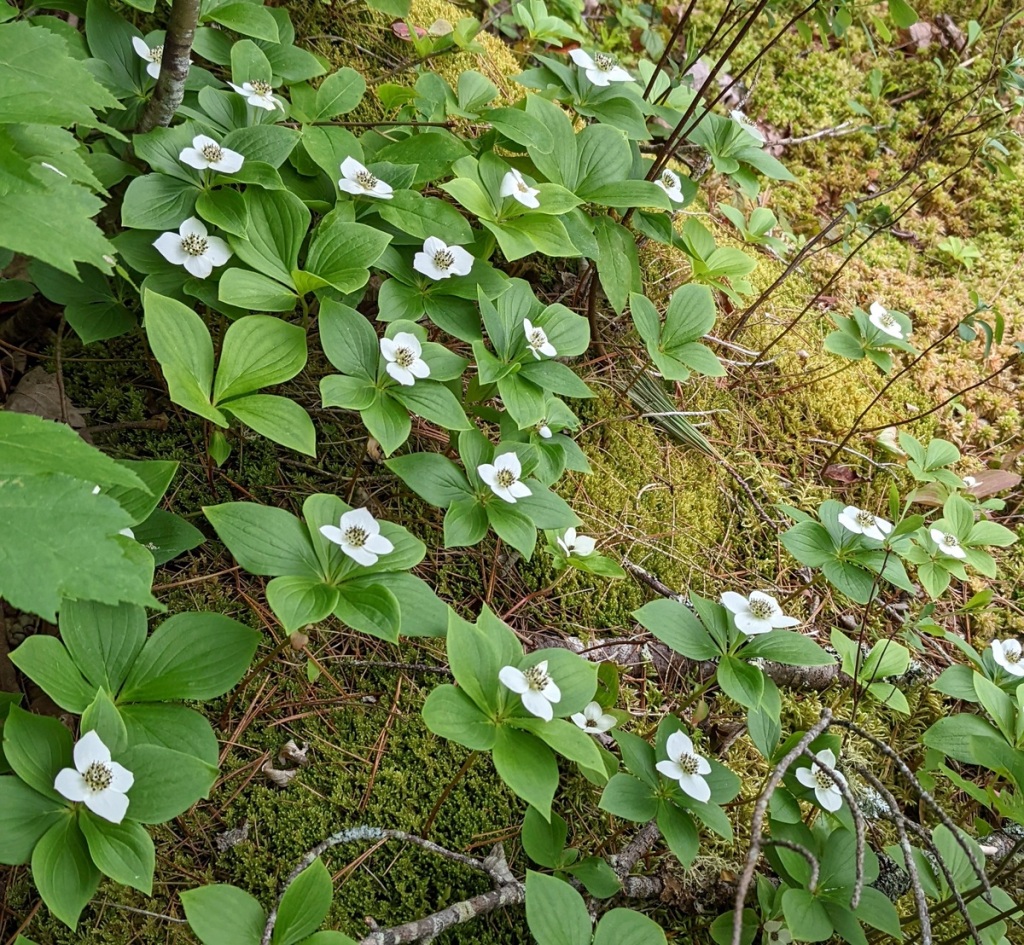
As I was sliding down the hill to get to the wild callas I passed a good stand of bunchberry still in bloom. I didn’t see them at the time but I can see in the photo that many of the flowers had already formed berries, so maybe this year I’ll be able to show you the bunches of red berries that give the plant its name. This is just about the biggest colony of bunchberries I’ve seen. They seem to love the mossy hillside.

I’ve never seen so many painted trilliums growing in one spot before and I was happy about that because it’s my favorite of the three that grow in this area.

Many of the trilliums had been pollinated and were showing seed pods, which I was also happy to see. They’ll turn bright red as they ripen. As far as I know painted trilliums are the only one of the three that have a seed pod that stands up on a stem as this one does. Red trillium seed pods are sessile (sit right on) the leaves without a stem and nodding trillium seed pods hang under the leaves, just as the flowers do.
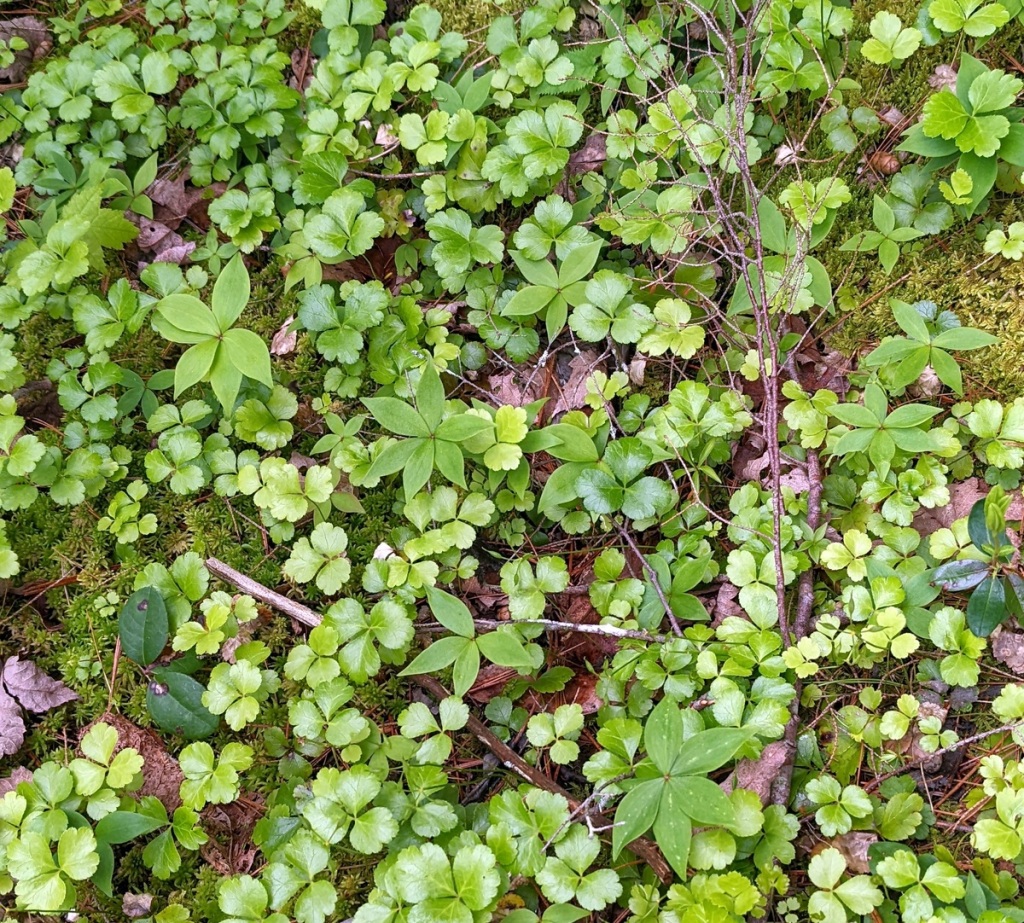
I’ve never seen so many goldthread plants growing in one place either. They’re the ones with three very shiny leaves. Their small white flowers passed about a month ago. The other plants in this shot are Indian cucumber root seedlings.

And here is an Indian cucumber root plant fully grown and flowering. I saw lots of them here as well. In fact everything here seemed to be thriving. These plants grow in two tiers of whorled leaves and the unusual flowers hang under the upper tier of leaves as can be seen here. If you don’t understand how whorled leaves work the lower tier of leaves seen here shows a perfect example of a whorl. The plant gets its name from the small white root, which has the shape and flavor of cucumber. Native Americans used Indian cucumber roots as food.
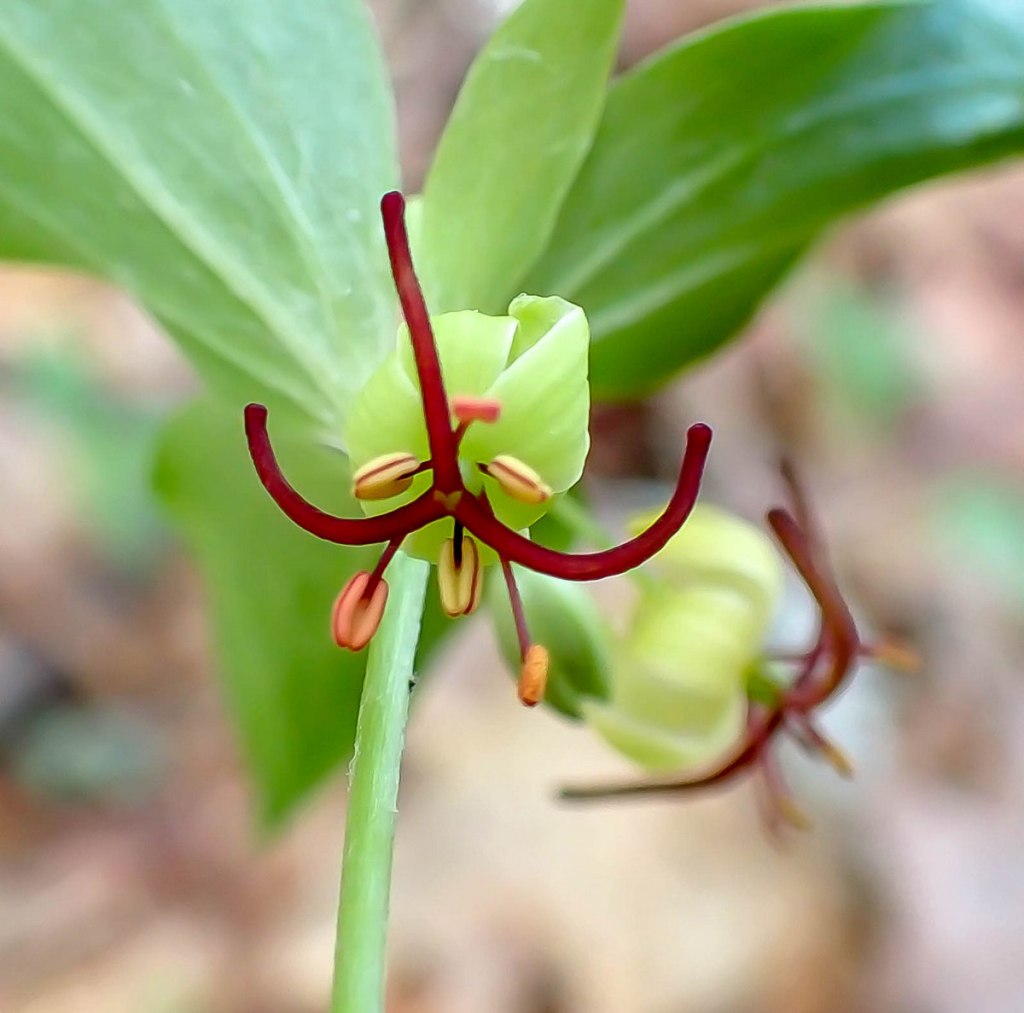
The unusual flowers of Indian cucumber root have 6 yellowish green tepals, 6 reddish stamens topped by greenish anthers, and 3 reddish purple to brown styles. These large styles are sometimes bright red- brown. Each flower will become a shiny, inedible dark purplish black berry. These plants like to grow under trees in dappled light, probably getting no more than an hour or two of direct sunlight each day.

Hobblebush isn’t normally a ground hugging shrub unless there are deer in the area. Since every plant I saw looked like this one I’d guess that there are a lot of deer (or maybe moose) here. Every plant had been pruned back so hard they looked like vines.

It looked like whatever was eating the plants was also eating the unripe green fruit. These berries will ripen to red and then purple black if they are left alone.

A dead pine rose up out of the water like the skeleton of some ancient beast. It was interesting to see how all the limbs had grown mostly on one side, which was the side that received the most sunlight. Sunlight is also heat and heat falling on the trunk stimulates cell growth. If the back side of the tree is in the shade the tree “knows” that there is no point in growing branches on that side because they won’t receive any light and will just die off. Since a tree is all about turning sunlight into food, it’s going to grow all of its photosynthesizing leaves or needles where the sunlight is. If you walk around a pond or even a clearing in the forest you’ll see a lot of one sided trees.
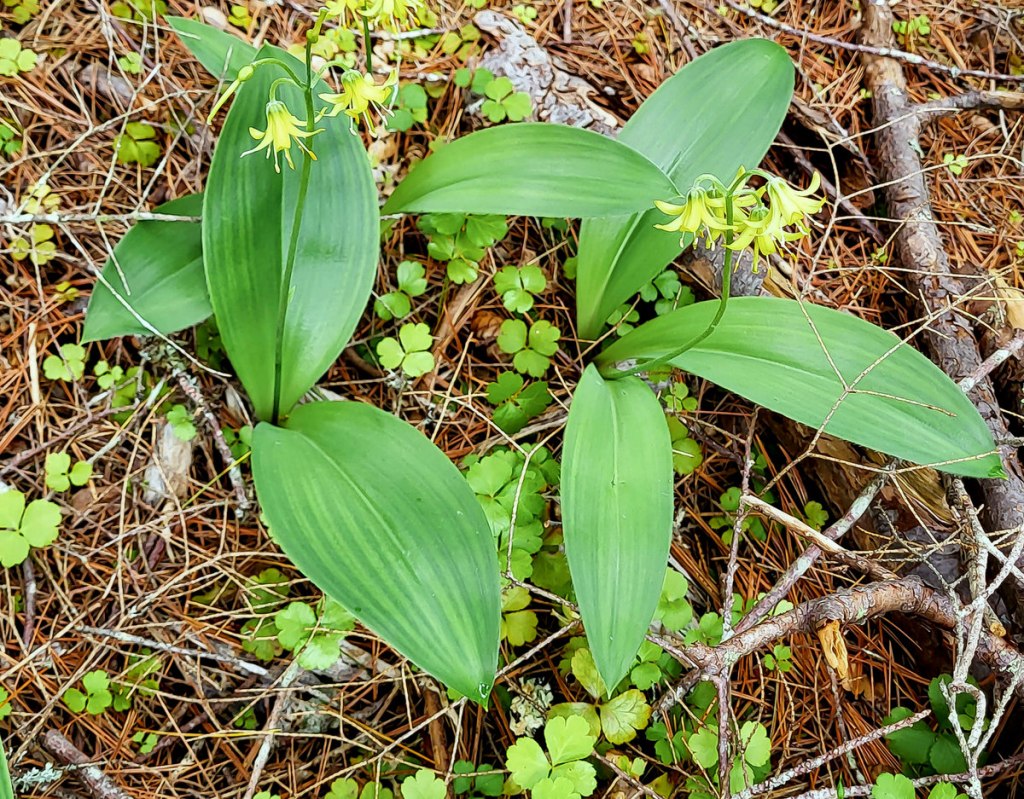
Some plants can tolerate more shade because they have larger leaf surfaces. More leaf surface means they can gather more light. The hobblebushes we saw earlier are like that and so are the pretty little blue bead lilies seen here. But nothing, not even mushrooms, can grow in the dark, so even plants that grow in deep woods will get an hour or two of sunlight each day. That’s why, when I see a sunbeam shining on a spot in a forest I always go to where it falls to see what plants or mushrooms are growing in its light. There were lots of blue bead lilies spotted here and there throughout these woods, and that told me if I sat there and watched long enough I’d see sunlight falling on each spot. These plants are named for their beautiful electric blue berries that will follow the flowers.
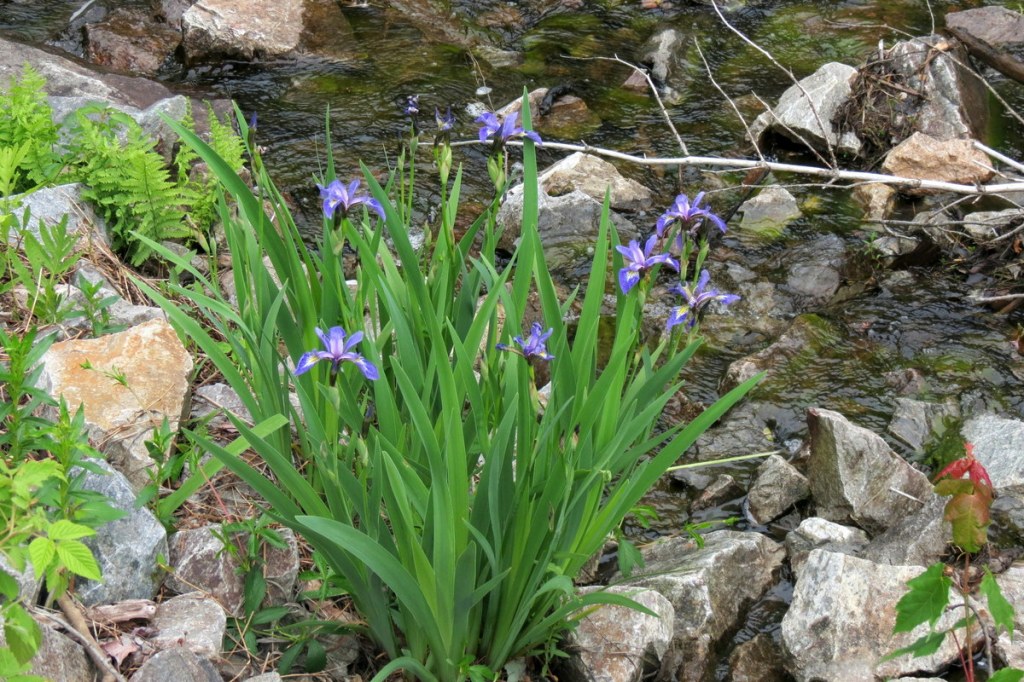
This pond has a small earthen dam that controls its outflow and in the outflow stream were many native blue flag irises. They and all of the flowers here seem to be having an extended bloom. Possibly because of the two or three cool, damp days we seem to have each week.

There must have been a hatching of chalk white corporal dragonflies just before I came, because there seemed to be hundreds of them flying around. Some would rest as this one did, on stones or plants, but not for long. I never knew how aggressive these dragonflies were until I saw them chasing off beautiful blue slaty skimmers, which I’d like to get a photo of. Things will calm down after a while and the chalk whites will start to fade away so the slaty skimmers and others can have their turn in the spotlight, and then maybe I’ll get a shot or two of them.
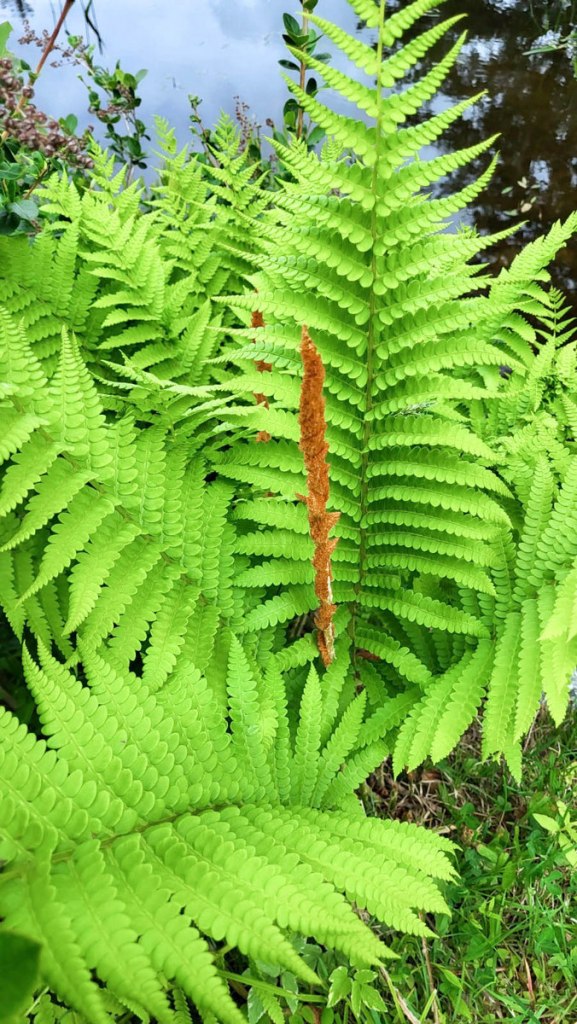
The big red “cinnamon sticks” that give cinnamon fern its name have appeared.

Of course, this has nothing to do with cinnamon. What someone thought looked like a cinnamon stick is actually the fern’s fertile frond, and if you click on this photo and look closely you’ll find that it’s covered with many thousands of tiny, spherical, spore bearing sporangia. You’ll also find that I was a bit late because most had already opened and released their spores to the wind. These spore cases are so small the only thing I can think of to compare them to is the head of a common pin. There aren’t many cameras that I know of that can get a photo of them, so what you see here isn’t something you’ll see very often.

I suppose I’ve always kept my eyes on the ground because for me, that’s where the most fascinating things were. Since I didn’t “do” birds when I was young there was no real point in looking up at tree branches so instead I admired their roots. Some tree roots on well-traveled trails come with a story, or more accurately a question, like how many thousands of footsteps does it take to sand one down until it looks like a craftsman has taken it to his shop and made it as beautiful as it can be, and then put it back again?

There are a few lichens also growing here. This one is either pink earth lichen or bubblegum lichen, I’m not sure which. Both have what look like tiny balls of pink dough stuck on a match stick, but on bubblegum lichen the length of the stalks that the plump pink apothecia sit on are longer than they are on pink earth lichens. Both are rarely seen in this area but when I do see them they seem to always be growing near blueberries and sweet fern, as these were. I look for the whitish crusty thallus or body of the lichen, which grows on the soil surface; usually in dry, sandy places. They seem to prefer undisturbed ground in full sun.

Being in a place like this shows you how much you can learn from nature if you let nature lead. And it will lead; before you move on from what you’ve been looking at, just look around. You’ll almost always find that, from where you stand you can see all sorts of interesting things to go and see next. There is no need for a plan. Just let nature lead you from one beautiful and / or interesting thing to the next just as a child would, and you’ll see things you hadn’t even imagined. On this day I originally went to the pond planning to spend 15 minutes or so checking to see if the sheep laurel were blooming. They weren’t in bloom that first day but the place was so peaceful and filled with interest, I ended up staying for most of the day.
When you gaze out on a quiet, peaceful meadow, next to a still pond, under a motionless blue sky, you wonder how the noisy, busy cacophony of life could have arisen from such silent, motionless beginning. ~Anonymous
Thanks for stopping in.

